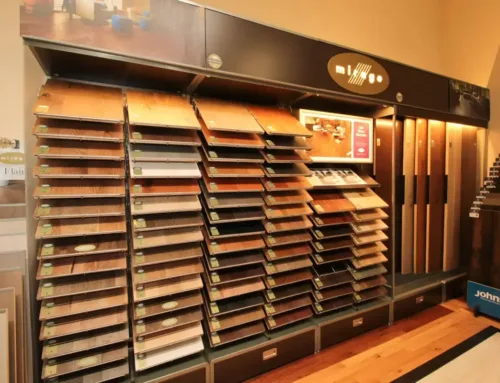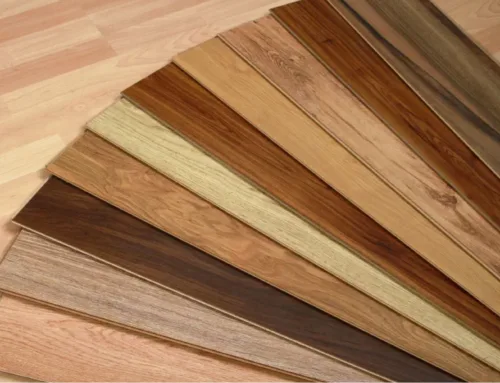Wholesale wood flooring provides contractors access to quality materials at significantly reduced prices compared to retail stores. Contractors, builders, remodelers, and designers benefit from wholesale pricing structures that can reduce project costs substantially.
The wholesale flooring market serves as the backbone for construction and renovation projects. The North America region accounted for 15.1% of the global wood and laminate flooring market in 2023, making it a crucial region for wholesale opportunities. Smart sourcing decisions directly impact project profitability and client satisfaction.
Access wholesale pricing for your next project. Contact Rustic Wood Floor Supply today to explore further.
[Get In Touch: (678) 691-0533]
What Is Wholesale Wood Flooring?
Wholesale Wood Flooring refers to flooring materials sold directly from manufacturers or distributors to contractors at reduced prices below retail markup. These transactions typically involve larger quantities and business-to-business relationships.
Wholesale pricing eliminates middleman markups that retail stores add. Contractors access the same quality products at lower costs by buying directly from the source. In 2023, hardwood flooring sales volume in the United States reached approximately 1.38 billion sq ft., indicating massive market opportunities for wholesale contractors.
Pricing Structure Differences:
- Wholesale: Direct from manufacturer/distributor
- Contractor: Special trade pricing programs
- Retail: Consumer pricing with full markup
Who Can Buy Wholesale?
Licensed contractors, construction companies, and flooring professionals traditionally access wholesale pricing. Many suppliers now extend wholesale opportunities to qualified buyers who meet minimum purchase requirements.
Qualified Buyers Include:
- Licensed general contractors
- Flooring installation specialists
- Interior designers with trade accounts
- Property management companies
- Large-volume homeowners (case-by-case basis)
Some distributors offer public access to wholesale pricing when buyers meet volume thresholds or join membership programs.
Types of Wood Flooring Available at Wholesale
Solid Hardwood
Solid hardwood flooring consists of planks milled from single pieces of wood, offering durability and refinishing capabilities. This premium option provides authentic wood grain and natural beauty that increases property value.
Popular Species Available:
- Oak: Durable with prominent grain patterns
- Maple: Light color with subtle grain
- Walnut: Rich brown tones with elegant grain
- Hickory: Extremely hard with rustic character
- Cherry: Warm reddish tones that darken over time
Solid hardwood works best in climate-controlled environments and can be refinished multiple times throughout its lifespan.
Engineered Wood
Engineered wood flooring features real wood veneer over plywood or high-density fiberboard cores. This construction provides dimensional stability while maintaining authentic wood appearance.
Construction Benefits:
- Greater moisture resistance than solid wood
- Suitable for below-grade installation
- Multiple wear layer thicknesses available
- Compatible with radiant heating systems
Wear Layer Options:
- 2mm: Budget-friendly with limited refinishing
- 4mm: Standard option allowing light refinishing
- 6 mm+: Premium choice with multiple refinishing cycles
Other Options
Modern wholesale markets offer alternatives beyond traditional hardwood. These options provide wood aesthetics at various price points and performance levels.
Alternative Flooring Types:
- Laminate: Photographic wood images over composite core
- Luxury vinyl plank: Waterproof with realistic wood textures
- SPC (Stone Plastic Composite): Rigid core with enhanced durability
- Wood-look tile: Ceramic or porcelain with wood grain patterns
Note: Engineered wood flooring can be installed in basements and over concrete slabs, expanding installation possibilities that solid hardwood cannot match.
How to Source Wholesale Wood Flooring
Where to Buy
Local distributors provide hands-on service and immediate product inspection opportunities. National suppliers offer a broader selection and competitive pricing through online platforms.
Local Sources:
- Regional flooring distributors
- Lumber yards with flooring divisions
- Specialty hardwood suppliers
- Trade-only showrooms
Supplier Evaluation Tips:
- Read contractor reviews and testimonials
- Verify inventory levels and stock consistency
- Test customer service responsiveness
- Compare return and warranty policies
Looking for a reliable wholesale wood floor supplier in your area? Connect Rustic Wood Floor Supply! We understand regional preferences and delivery logistics.
[Call Us: (678) 691-0533]
Buying Process
Establishing contractor accounts requires business verification and credit approval. Most suppliers request contractor licenses, insurance certificates, and business references.
Account Setup Requirements:
- Valid contractor license
- Business insurance documentation
- Credit application completion
- Trade reference verification
Order Considerations:
- Minimum order quantities (often 500-1000 sq ft)
- Bulk discount tiers for larger orders
- Lead times for special orders
- Delivery scheduling and logistics
Shipping Options:
- Nationwide freight delivery
- Local pickup for immediate needs
- Job site delivery coordination
- Warehouse consolidation services
Pricing and Cost Considerations
How Wholesale Pricing Works
Wholesale pricing reflects multiple factors, including wood species, finish quality, order quantity, and current market conditions. Contractors access tiered pricing based on volume commitments and supplier relationships.
Price Factors:
- Wood species rarity and availability
- Finish the complexity and quality level
- Order volume and frequency
- Geographic location and shipping costs
- Seasonal market fluctuations
Special Pricing Programs:
- Contractor loyalty discounts
- Volume purchase incentives
- End-of-year clearance pricing
- New product introduction specials
Comparing Costs: Wholesale vs. Retail
Contractors typically save 20-40% compared to retail pricing through wholesale channels. These savings directly improve project margins and competitive positioning.
Savings Examples:
- Premium oak flooring: Retail $8/sq ft vs Wholesale $5/sq ft
- Engineered maple: Retail $6/sq ft vs Wholesale $4/sq ft
- Luxury vinyl plank: Retail $4/sq ft vs Wholesale $2.50/sq ft
Cost Calculation Tips:
- Include delivery charges in the total cost
- Factor in minimum order requirements
- Account for potential waste percentages
- Compare warranty coverage differences
In 2022, the carpet segment made up roughly one-third of the U.S. flooring industry’s sales, while wood flooring continues gaining market share. Build relationships with multiple suppliers to access competitive pricing and ensure product availability during busy seasons when demand peaks.
[Get A Quote From Rustic Wood Floor Supply: (678) 691-0533]
Tips for Contractors
Maximizing Value
Successful wholesale purchasing requires strategic planning and relationship building. Contractors who develop supplier partnerships access better pricing and priority service.
Negotiation Strategies:
- Commit to annual volume targets
- Pay invoices promptly for early payment discounts
- Bundle multiple project orders
- Participate in supplier training programs
Relationship Building:
- Attend trade shows and supplier events
- Provide project photos for supplier marketing
- Refer other contractors to suppliers
- Communicate project schedules early
Managing Inventory and Orders
Smart inventory management balances project needs with storage limitations. Ordering extra material protects against future shortages and color variations.
Ordering Guidelines:
- Order 10% extra for cuts and waste
- Keep 5% additional for future repairs
- Coordinate delivery timing with installation schedules
- Inspect shipments immediately upon arrival
Overstock Solutions:
- Return unopened boxes within policy timeframes
- Use excess material on future projects
- Sell surplus to other contractors
- Negotiate supplier credit for future orders
Quality Control
Consistent quality control prevents installation delays and client dissatisfaction. Inspect every shipment for color consistency, grade uniformity, and damage.
Inspection Checklist:
- Color matching across all boxes
- Grade consistency within species
- Moisture content verification
- Damage assessment and documentation
Quality Issues Resolution:
- Document problems with photos
- Contact the supplier immediately
- Separate defective material
- Request a replacement or credit
Streamline your wholesale purchasing process. Discover proven systems that save time and money on every flooring project.
[Contact Us: (678) 691-0533]
Common Challenges and Solutions
Supply Chain and Stock Issues
Limited inventory and extended lead times challenge project scheduling. Proactive planning and supplier communication minimize delays.
Common Stock Problems:
- Popular species backordered
- Color dye lot discontinuations
- Seasonal availability fluctuations
- Transportation delays
Solutions:
- Order materials early in project planning
- Maintain relationships with multiple suppliers
- Consider alternative species with similar characteristics
- Build buffer time into project schedules
Installation Considerations
Matching new flooring with existing materials requires careful color and grade selection. Client communication about options and timelines prevents misunderstandings.
Matching Challenges:
- Color variations between production runs
- Grade differences in natural products
- Finish the sheen level consistency
- Pattern and grain matching
Client Communication:
- Show actual samples before ordering
- Explain natural wood variation
- Discuss timeline expectations
- Provide care and maintenance instructions
Poor communication about wood flooring’s natural variations causes more client disputes than quality issues. Set proper expectations upfront to maintain relationships.
Final Call
Wholesale wood flooring provides contractors with essential cost advantages and product access needed for profitable projects. Smart sourcing strategies, supplier relationships, and quality control practices determine project success.
Research multiple suppliers, compare pricing structures, and establish accounts with reputable distributors. The investment in wholesale relationships pays dividends through improved margins and client satisfaction.
Reform Your Flooring Projects with Rustic Wood Floor Supply!
Our contractor program offers exclusive access to hand-selected species, expedited delivery, and dedicated account management. If you’re installing classic oak in a historic renovation or modern engineered planks in a luxury home, we have the inventory and expertise to make your project exceptional.
Stop settling for limited selection and inflated prices from retail outlets. Join hundreds of contractors who trust Rustic Wood Floor Supply for their most important projects.
Frequently Asked Questions
Who qualifies for wholesale wood flooring pricing?
Its pricing is typically available to licensed contractors, builders, and flooring professionals, but some suppliers may also extend these prices to large-volume buyers or the general public, depending on their policies.
What is the difference between solid hardwood and engineered wood flooring?
Solid hardwood flooring is made from a single piece of wood, while engineered wood flooring consists of a real wood veneer layered over plywood or high-density fiberboard, making it more stable in varying humidity.
Can homeowners purchase wood flooring at wholesale prices?
Some suppliers allow homeowners to purchase at wholesale prices if they meet minimum order requirements or buy in bulk, but most wholesale programs are designed for contractors and trade professionals.
How much extra flooring should I order for a project?
It is recommended to order about 10% more flooring than the measured area to account for cuts, waste, and future repairs.
What warranties are available on wholesale wood flooring?
Most wholesale flooring comes with a manufacturer’s warranty covering defects, and some installers may offer additional service guarantees, so always confirm the warranty terms before purchasing.
How long does wood flooring need to acclimate before installation?
Solid wood flooring generally requires two to three days to acclimate to the installation environment, while engineered wood may need less time, but humidity and manufacturer guidelines should always be followed.
Author Profile
- I have worked in hardwood flooring for the last 8 years. Use to run a company of residential crews as well as a company with gym flooring. If you need floor installation or refinishing help, I should have an answer or at least get you in the right direction.
Latest entries
 FlooringNovember 25, 2025What Engineered Hardwood Flooring Will Last Longest?
FlooringNovember 25, 2025What Engineered Hardwood Flooring Will Last Longest? FlooringNovember 22, 2025Best Wood Floor Cleaner Liquid for Hardwood Flooring
FlooringNovember 22, 2025Best Wood Floor Cleaner Liquid for Hardwood Flooring FlooringNovember 21, 2025How To Remove Adhesive From Hardwood Floors?
FlooringNovember 21, 2025How To Remove Adhesive From Hardwood Floors? FlooringNovember 17, 2025Best Sanding Machine For Hardwood Flooring
FlooringNovember 17, 2025Best Sanding Machine For Hardwood Flooring



